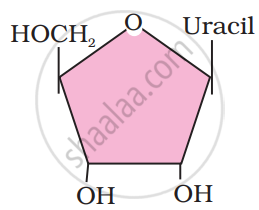Advertisements
Advertisements
Question
Describe various forms of lipid with a few examples.
Solution
Lipids are generally water-insoluble. They could be simple fatty acids. A fatty acid has a carboxyl group attached to an R-group. The R-group could be a methyl (–CH3), or ethyl (–C2H5) or a higher number of CH2 groups (1 carbon to 19 carbons). For example, palmitic acid has 16 carbons including carboxyl carbon. Arachidonic acid has 20 carbon atoms including carboxyl carbon. Fatty acids could be saturated (without a double bond) or unsaturated (with one or more C=C double bonds). Another simple lipid is glycerol which is trihydroxy propane.
- Many lipids have both glycerol and fatty acids. Here the fatty acids are found esterified with glycerol. They can be then monoglycerides,
diglycerides and triglycerides. These are also called fats and oils based on melting point. Oils have a lower melting point (e.g., gingerly oil) and hence remain as oil in winter. - Some lipids have phosphorous and a phosphorylated organic compound in them. These are phospholipids. They are found in cell membranes. Lecithin is one example. Some tissues especially the neural tissues have lipids with more complex structures.
APPEARS IN
RELATED QUESTIONS
Explain the composition of triglyceride.
Can you attempt building models of biomolecules using commercially available atomic models (Ball and Stick models).
Attempt titrating an amino acid against a weak base and discover the number of dissociating ( ionizable ) functional groups in the amino acid.
Draw the structure of the amino acid, alanine.
The acid insoluble fraction does not contain
Triglyceride consists of ______.
Identify the structural formula given in the figure.

It is said that elemental composition of living organisms and that of inanimate objects (like earth’s crust) are similar in the sense that all the major elements are present in both. Then what would be the difference between these two groups? Choose a correct answer from among the following:
Many elements are found in living organisms either free or in the form of compounds. Which of the following is not found in living organisms?
An aminoacid under certain conditions have both positive and negative charges simultaneously in the same molecule. Such a form of aminoacid is called ______.
